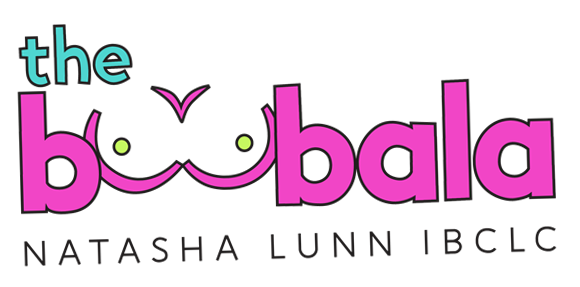Page Content
- Does breastfeeding help with postpartum belly?
- Why does my pregnant belly look smaller some days?
- How to get a flat belly after pregnancy?
- Does breastfeeding help your stomach?
- Does postpartum saggy belly go away?
- How do models get flat belly after pregnancy?
- Why does breastfeeding make you lose weight?
- What is the biggest benefit of breastfeeding?
- Does breastfeeding reduce tummy?
The Connection Between Breastfeeding and Stomach Shrinkage
Breastfeeding is often associated with various physical changes in a woman’s body, particularly after childbirth. One common belief is that breastfeeding can help shrink the stomach, but the reality is more nuanced.
Physiological Changes During Breastfeeding
When a woman breastfeeds, her body undergoes significant hormonal changes. The hormone oxytocin, released during breastfeeding, not only facilitates milk ejection but also promotes uterine contractions. These contractions can help the uterus return to its pre-pregnancy size more quickly, which may contribute to a feeling of a “shrinking” stomach. This process is often referred to as involution, where the uterus contracts and reduces in size after delivery.
Caloric Expenditure and Weight Loss
Breastfeeding also requires additional energy. On average, breastfeeding mothers burn about 300 to 500 extra calories per day, which can aid in weight loss. This caloric expenditure, combined with the hormonal changes, can lead to a reduction in body fat, including around the abdominal area. However, the extent of weight loss varies significantly among individuals, influenced by factors such as diet, physical activity, and genetics.
Misconceptions and Realities
Despite these physiological benefits, it’s important to address some misconceptions. While breastfeeding can assist in the process of returning to a pre-pregnancy body shape, it is not a guaranteed method for weight loss or stomach shrinking. Many women may find that their bodies change in ways that are not solely dependent on breastfeeding. Factors such as postpartum recovery, lifestyle choices, and individual body types play crucial roles in how a woman’s body responds after childbirth.
Conclusion
In summary, breastfeeding can contribute to the shrinking of the stomach through hormonal changes and increased caloric expenditure. However, it is not a standalone solution for weight loss or body shape changes. Each woman’s experience is unique, and a holistic approach that includes a balanced diet and regular physical activity is essential for postpartum recovery and overall health.
Does breastfeeding help with postpartum belly?
A study published in the American Journal of Clinical Nutrition found that breastfeeding mothers tend to lose more weight compared to those who do not, even when they consume more calories. This is because the body uses stored fat to produce milk, thereby reducing belly fat.
Why does my pregnant belly look smaller some days?
“In the morning, the stomach is empty and the digestive tract has digested all food from the night before, making the abdominal area and, thus, the baby bump, appear smaller than later on in the day, when we’ve ingested food – especially if it’s a big meal,” she explained.
How to get a flat belly after pregnancy?
6 Get-Your-Body-Back Moves After Childbirth
- Walking.
- Deep Belly Breathing With Abdominal Contraction.
- Head Lifts, Shoulder Lifts, and Curl-Ups.
- Kneeling Pelvic Tilt.
- Kegels.
- Bonus Workouts for You and Your Baby.
Does breastfeeding help your stomach?
Breastfeeding can be a very magical time for both Mum and baby. It can also help enormously with the initial weight loss and stimulates the shrinking of the uterus and helps flatten your tummy. As well as helping burn calories the nipple stimulation of breast feeding produces the hormone oxytocin.
Does postpartum saggy belly go away?
See how it’s treated. You gain weight over 9+ months of pregnancy, so it’s normal to take 9+ months to get back your pre-pregnancy body after your baby is born. However, a belly bulge that doesn’t go away for months after delivery can be a sign of diastasis recti—a separation of your abdominal muscles.
How do models get flat belly after pregnancy?
Liposuction is a very popular stand-alone procedure for women with exercise resistant pockets of fat post-pregnancy. As a part of a mummy makeover, liposuction works to create greater definition and contour in the abdomen, sculpting a flatter, more athletic looking stomach.
Why does breastfeeding make you lose weight?
After that, breastfeeding may help people lose weight. People who exclusively breastfeed may use 400–500 calories daily to produce the milk a baby requires from 0 to 6 months. This is on top of their usual calorie requirements. People who consume fewer calories than their body uses may lose weight.
What is the biggest benefit of breastfeeding?
Breastfeeding can help protect babies against some short- and long-term illnesses and diseases. Breastfed babies have a lower risk of asthma, obesity, type 1 diabetes, and sudden infant death syndrome (SIDS).
Does breastfeeding reduce tummy?
At six weeks, you may have already lost the weight you gained during pregnancy. This is especially true if you’re breastfeeding. Breastfeeding mothers shed around 500 calories per day. This is because your body uses your stored calories from pregnancy to produce milk and feed your baby.

